Switching yarn in crochet is a simple process that can add color, texture, and interest to your projects.
Changing yarn in crochet is a simple process that can greatly enhance the appearance of your projects, allowing you to create multicolored patterns and designs. This process involves securing the old yarn, joining the new yarn, and continuing with your pattern.
Whether you’re working on a single crochet, double crochet, or any other stitch, the technique remains the same. This article will guide you through the steps of changing yarn in crochet, ensuring a seamless transition from one color to another.
By following these instructions, you’ll be able to change yarn like a pro, adding a new dimension to your crochet pieces.
Key takeaways:
- Choose yarns of similar thickness
- Create a tidy knot
- Keep tension consistent
- Select complementary colors
- Space out woven ends to prevent bulk
Materials for Changing Yarn in Crochet

To effect a successful transition between two different yarns in your crochet work, a number of materials will be required. First is the yarn you’re currently working with, and the new yarn you would want to switch to. Yarns in contrasting colors are often used to accentuate the change.
Also important is a suitable crochet hook, matched to the yarn size for your project. Hooks come in variety of sizes and choosing the right one will help create uniform and nicely fitting stitches.
A pair of sharp scissors is another vital tool to have on hand. This is used to cut off the old yarn once the change has been made.
A yarn needle is rather useful too. It comes in handy for weaving in the loose ends into the fabric once the yarn has been switched out.
The materials required are thus: your current yarn, the new yarn, a crochet hook, sharp scissors, and a yarn needle. Each tool plays a significant role in ensuring a clean and efficient yarn swap in your crochet project.
Tools for Changing Yarn in Crochet
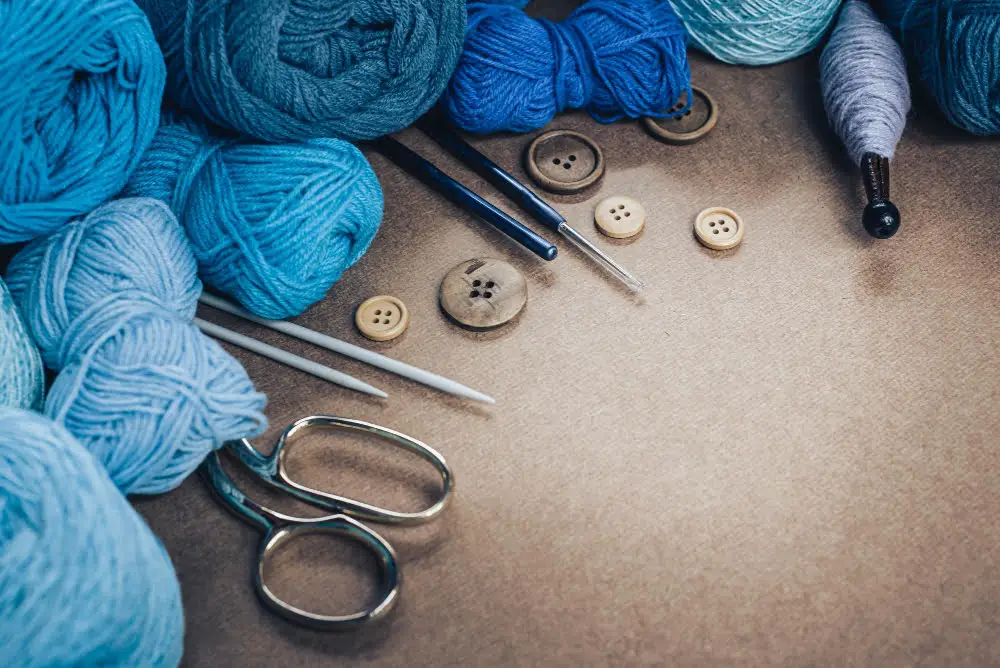
Scissors and a yarn needle are key tools for changing yarn in crocheting. The scissors are used for cutting the old and new yarn. Sharp scissors are recommended to avoid any frayed ends, which can complicate the crocheting process.
A yarn needle, on the other hand, is useful for weaving in ends once the yarn has been changed. Choose a needle with a large eye that can easily accommodate the width of your yarn.
For security and neatness, it’s also ideal to have a crochet hook that matches the size of the project’s stitches. A matching hook will ensure that the new yarn is easily incorporated into the work without disrupting the overall pattern or tension.
Basic Method for Changing Yarn in Crochet
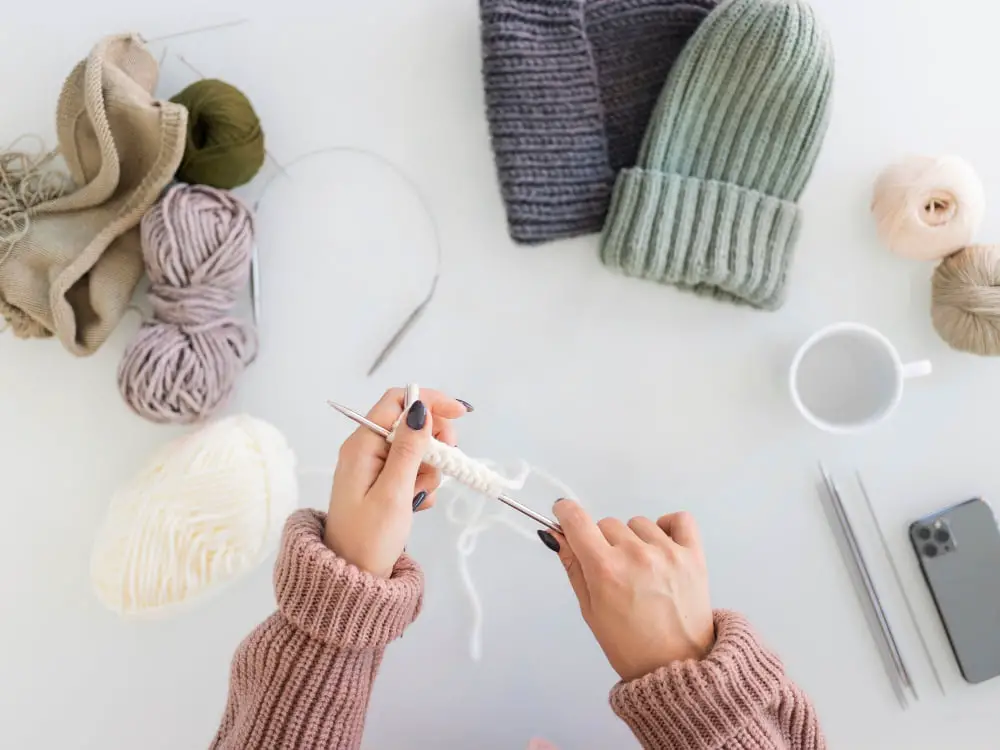
Start by crocheting the last stitch with the old yarn up to its final pull-through. Hold the new yarn against your work, leaving a tail, and draw it through the final two loops of the last stitch. Doing so anchors it without creating a new stitch.
For hiding the yarn ends, weave them in with your crochet hook. Working them in different directions will secure them. Carefully cut off any excess.
When continuing with the new color, ensure the stitches aren’t too tight. Create your stitches around the tail of the new color, so it catches within your work. This method will hide the loose ends, providing a seamless look.
This process is applicable to most stitches, including single, double, and half-double stitches. Notably, changing colors is often done at the end of a row, but you can also change yarn in the middle of the row or in the round.
What to Do With the Yarn Tails After Changing
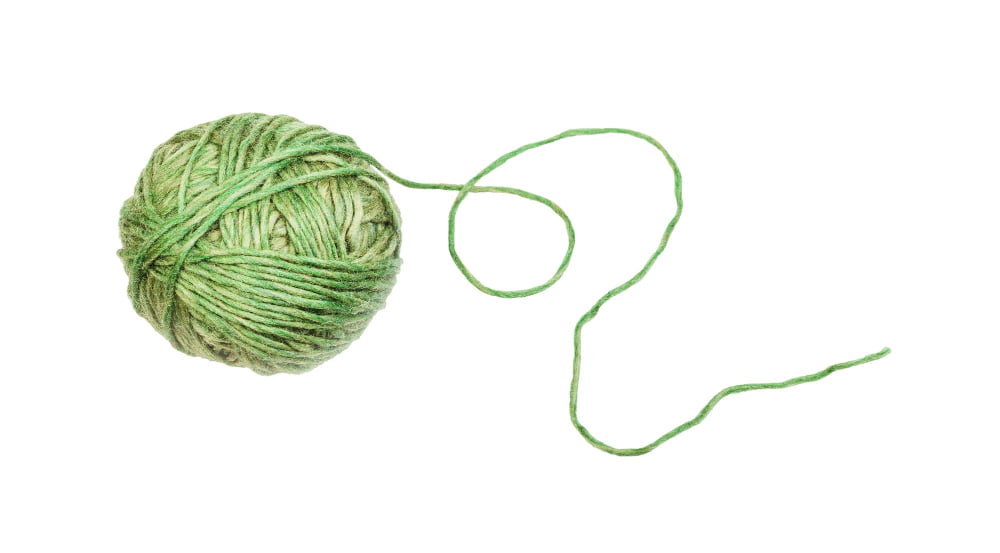
After completing the yarn change, the next step is to deal with the yarn tails. Leaving them hanging loosely is not a good idea, as they can unravel the work or simply make it look untidy.
First, secure the newly joined yarn. It is crucial to secure the knot by pulling both old and new yarn firmly, ensuring the knot is near the top of the last stitch made.
Next, weave in the ends. Use a darning needle, threading the yarn tail and weaving it back and forth through several stitches. This method of weaving in hides the ends inside the project, leaving a clean and professional finish.
While weaving, consider the fabric’s stretch. Weave in multiple directions on high-stretch fabrics to prevent the tails from working free.
If planning to add a border, you can crochet over the tails as you work the border row. Include the tail alongside the row of stitches, leaving no loose ends to weave in later.
Lastly, trim any excess. After the tails have been sufficiently woven in, carefully cut any leftover tail near the work surface. This step makes the project look neat, while the woven ends ensure it does not unravel.
Remember, doing a good job with the yarn tails enhances the finished product’s appearance and ensures its longevity.
Changing Yarn in Single Crochet
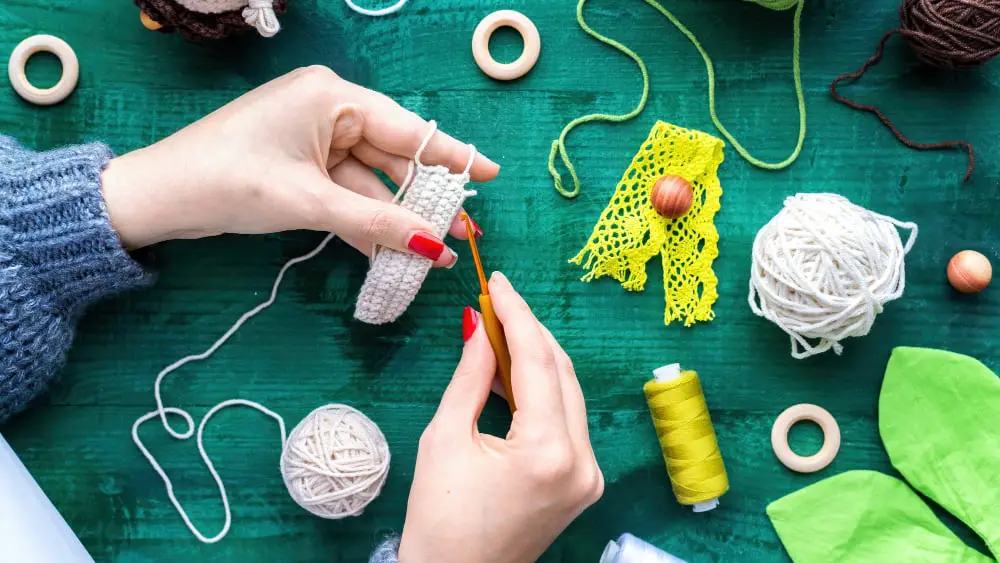
Swapping the yarn during single crochet might seem complex but by following simple steps, the process becomes straightforward. After inserting the hook into the next stitch, yarn over. You now have two loops on your hook.
At this stage, take the new yarn color and fold it, creating a small loop. Hold the loop at the back of your hook, ensuring it’s secure against the working yarn. Use this loop to finish the ongoing single crochet.
Keep in mind to adjust the new yarn and the tail to maintain a firm hold. You have now successfully changed the yarn mid-row in single crochet. Post changing the yarn, you can continue with your project.
Remember to weave in the ends of the yarn tails at the end of the crochet project to keep it neat. This also helps in hiding the color changes effectively.
Changing Yarn in Double Crochet
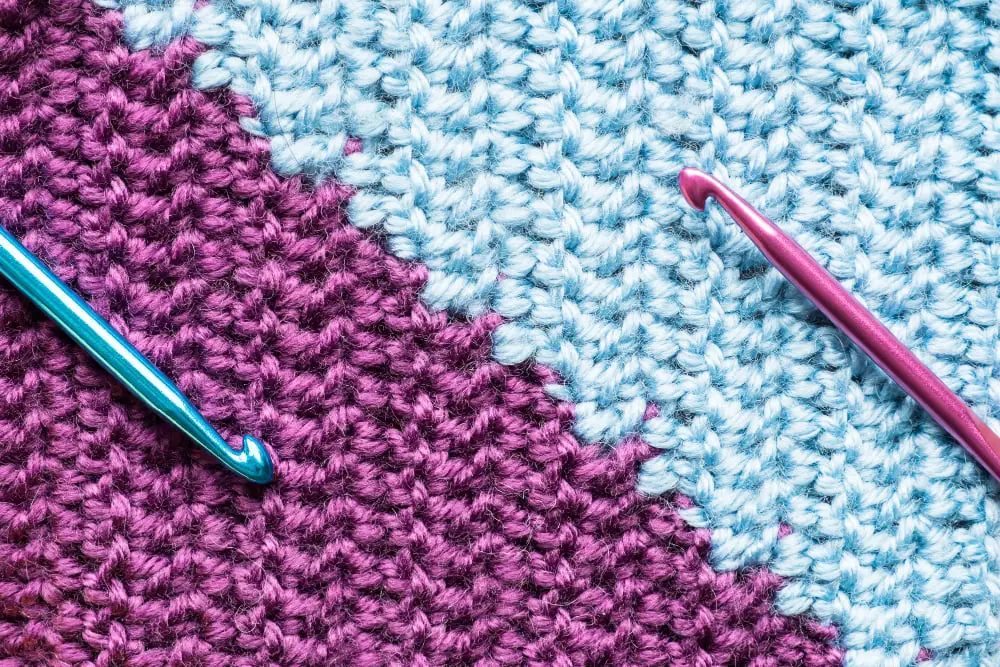
First, begin your double crochet stitch as normal. Yarn over, and insert the hook into the stitch. Yarn over again and pull through, you will have three loops on the hook.
Next, yarn over and carefully pull through only the first two loops on your hook. Two loops will remain. At this point, you should stop and cut your working yarn leaving a tail of about six inches.
Now, grab your new yarn and fold it to create a loop, leaving a tail of about six inches as well. Hold the loop against your hook and remaining two loops on the hook. Yarn over with the new yarn and carefully pull it through the two remaining original loops.
After that, tighten both tails slightly but not too much. The new yarn is now joined, and you can continue to crochet as normal. Be careful to crochet over both tails for at least three more stitches to secure them.
Lastly, it’s useful to know that for double crochet, it is best to change the yarn during the last stitch before the color change is needed. Your new color will then start flawlessly from the first stitch of a row or round.
Changing Yarn in Half-Double Crochet

First, complete a half-double crochet stitch until you’re left with three loops on the hook. Then, grab the new yarn color you’re switching to and create a loop leaving a 6-inch tail. Next, place this new loop on top of your crochet hook. Pull the new color through the three loops already on the hook by pulling yarn over and through all three loops.
To finish, drop the old yarn and start crocheting with the new yarn, keeping both the tail of the new yarn and the rest of the old yarn along the top of the row you’re crocheting. Just keep crocheting into the top of these strands until they’re worked into your crochet piece. This technique not only changes the yarn color but also secures the yarn ends, making it a cinch to change yarn in half-double crochet.
Remember to gently tug on the old yarn to tighten the last stitch it was used in. Crochet over the yarn ends for at least 2 inches, so they’re held securely; anything less might not hold as well. Ensure the end of the old yarn and the beginning of the new yarn are as close as possible to where you’re inserting the hook in your next stitch. This avoids the colors from overlapping and distorting your pattern.
This method works best when you want the color change to be distinct and noticeable. While it may seem complicated at first, with a bit of practice, changing yarn in half-double crochet will become a breeze.
How to Change Yarn in the Middle of the Row
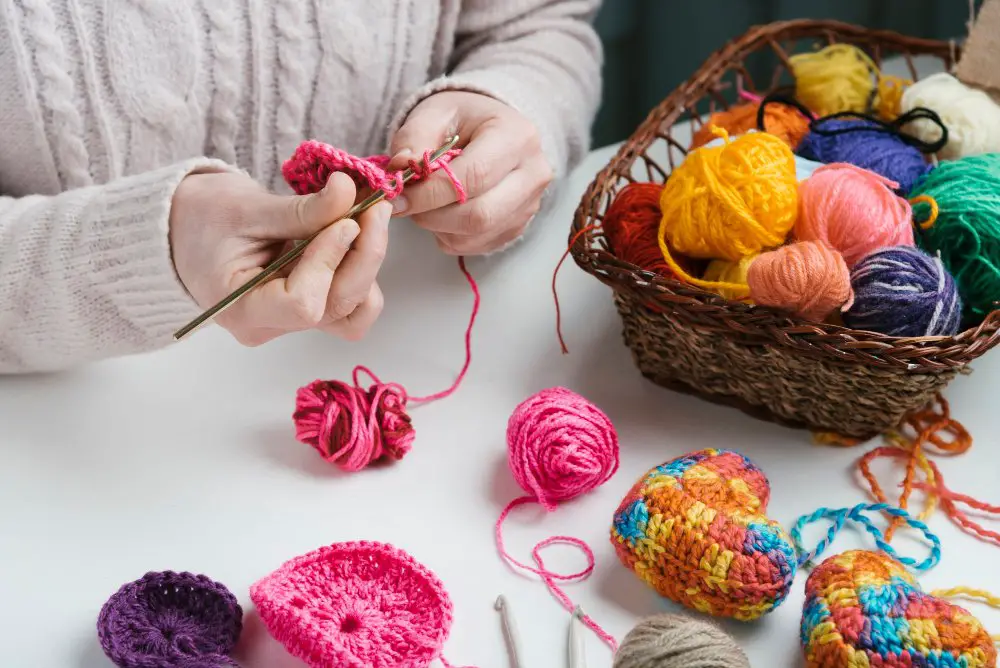
Switching yarn in the middle of a row demands a bit more care to keep your project looking clean. Absolutely doable, the procedure involves a few simple steps:
- Begin working on the last stitch with the old yarn until you reach the last yarn over.
- Drop the old yarn, then take the new yarn, leaving a six-inch tail.
- Yarn over with the new yarn and pull through the last two loops on the hook. You are now working with the new yarn.
- Continue crocheting with the new yarn, ensuring you crochet over the ends of the old and new yarn as you go to secure them.
- After several stitches, it can be beneficial to check the stitches, adjusting them if necessary to ensure even tension and a clean line in your work.
- Once you’re satisfied, trim the loose ends, taking care to not cut your working yarn.
Remember, practicing this skill several times will enhance your agility and confidence, so don’t feel discouraged if it doesn’t look perfect on the first try.
How to Change Yarn At the End of a Row

Begin by crocheting the very last stitch of the row until only two loops are remaining on the hook. Prepare the new yarn by making a loop without a knot, leaving a long tail.
Place this loop on the hook, ensuring that the loop’s tail end is towards the right, and the working end of the yarn is toward the left. Draw this new loop through the two remaining loops of the old yarn on the hook.
Remember not to pull on the old yarn’s tail end, but rather carefully adjust to close any gaps created at the end of the row as needed. At this point, only the new yarn should remain on the hook. Proceed to crochet the next row with the new yarn.
The tail ends of both the old and new yarn will be left hanging. These can be later woven in with a yarn needle or crochet hook, along the edges of your crochet project, so they’re securely hidden away. This method ensures a neat and tidy finish to any crochet project when changing yarn at the end of a row.
How to Change Yarn in the Round
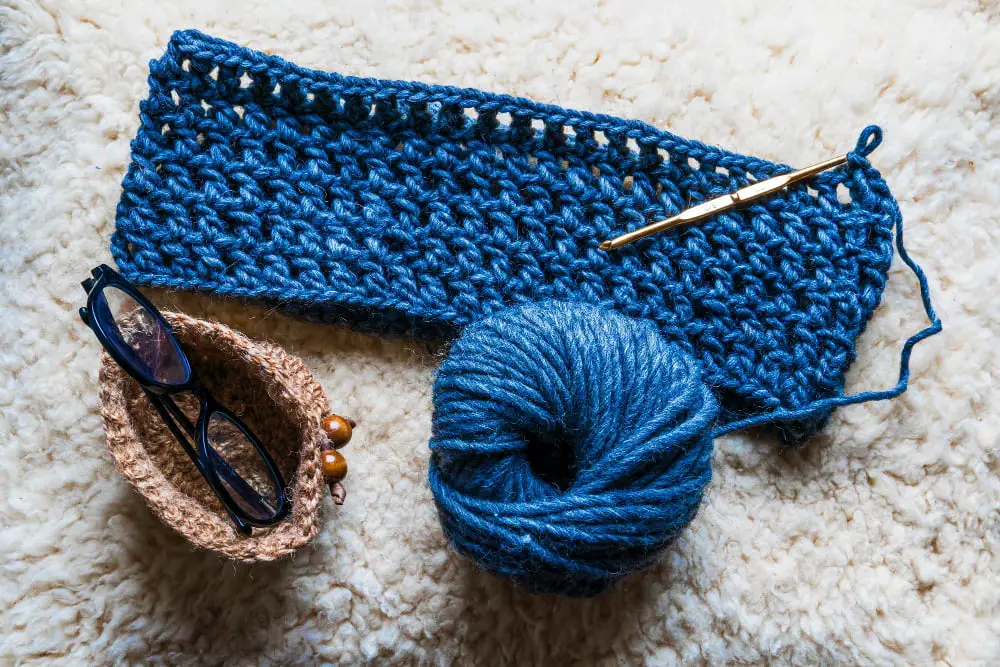
When changing yarn in the round, locate the stitch where you’d like to introduce the new color. Insert the crochet hook into this stitch, then yarn over with the old color. Pull through. Two loops will be left on the hook. Loop the new yarn color over the hook, then pull through the two loops.
Tighten both ends to secure, careful not to distort the stitch tension. Cut the old yarn, leaving a tail for weaving in later. Continue your pattern with the new yarn.
Remember to swap at the start of the round for solid color changes. This will keep the appearance of a seamless change.
Knotted changes are not recommended as they can come undone with use or washing. Instead, weave in the yarn ends securely during the final step to add durability.
Lastly, adjust your tension accordingly. The new color should flow smoothly from the old color without any noticeable jump in stitch tension.
Tips for Changing Yarn in Crochet
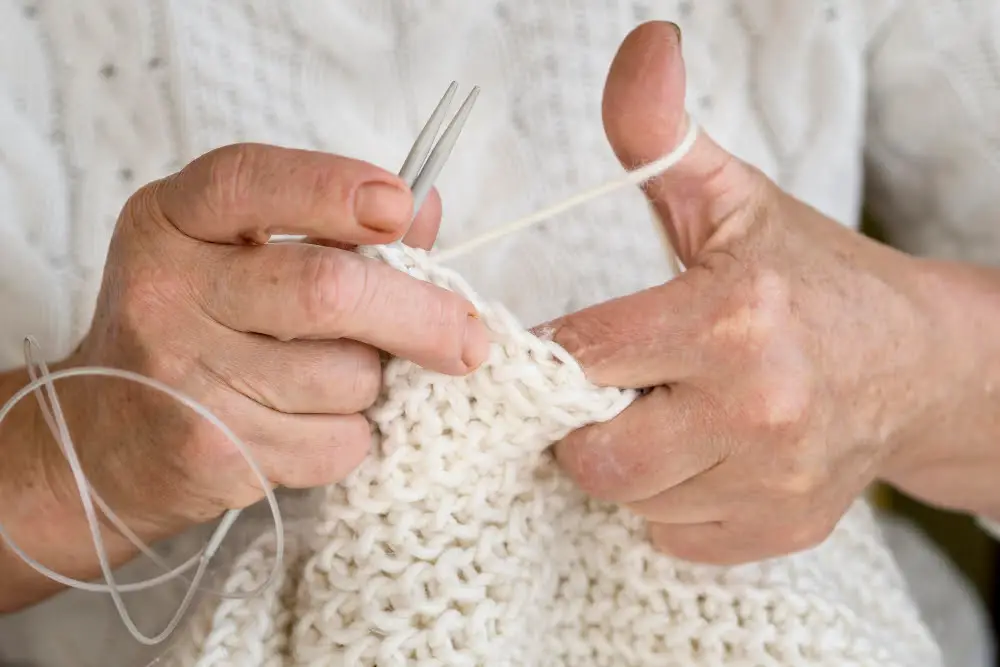
When changing yarn in crochet, keep these tips in mind:
Choose yarns of similar thickness. It ensures the texture and the appearance of your project remains consistent.
Create a tidy knot. After joining the new yarn, making a firm yet tidy knot can prevent it from unraveling through use and washes.
Keep your tension consistent. Ensuring the same tightness of stitches with the new yarn as it was with the old one is crucial to maintain pattern consistency.
Color changing. If you are going for a pattern switch, choose complementary colors or tones that blend well together.
Pre-prep your yarn. Have the next yarn color or type ready prior to reaching the change point can make the transition smoother.
Avoid weaving ends in the same area. When weaving in the ends after a color change, try to space them apart to prevent a bulky spot in your project.
Invisible join. If you’re working in the round, you can use an invisible join for a seamless color transition.
Remember, with changing yarn, the aim is to make the transition as seamless as possible to maintain the integrity of your crochet project.
Troubleshooting Common Problems During Yarn Change
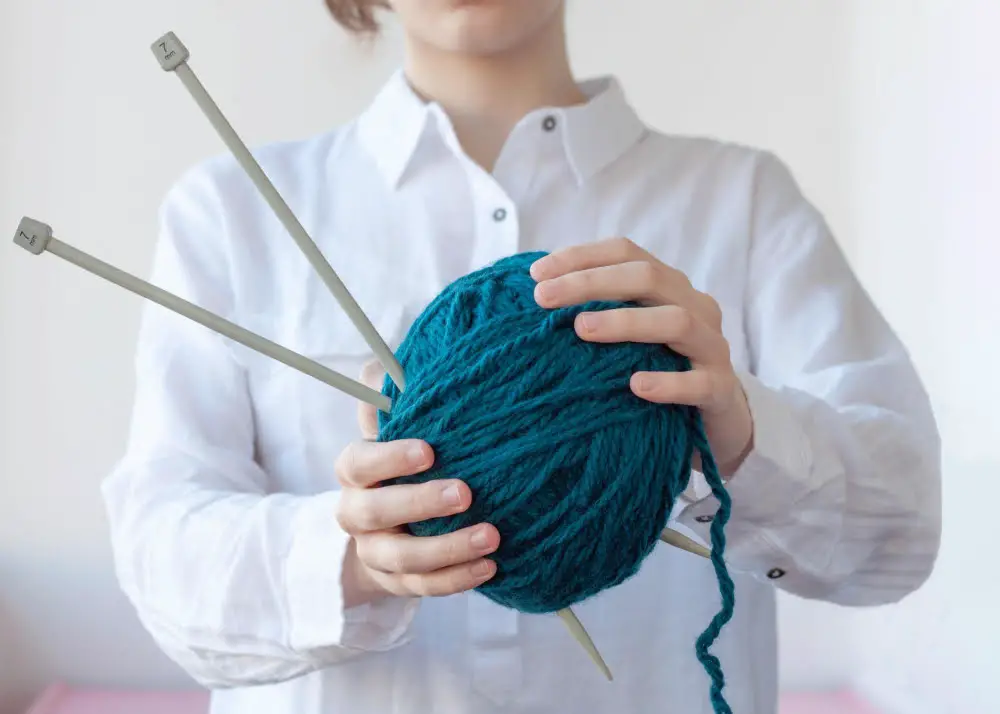
Despite careful preparation, some difficulties might arise during yarn change. Dealing with these common issues effectively can ensure a smooth transition and promote a high-quality end product.
For loose ends that get unruly, weaving them into the stitches with a darning needle can secure them neatly. Another common issue is a knot or bulge where the new yarn was attached, which is often caused by not maintaining the right tension. Practice proper tensioning techniques to prevent this from becoming a frequent occurrence.
If the color transition seems abrupt or unsatisfactory, one potential solution is to use a variegated yarn or a color gradient yarn. These yarns transition between colors gradually, creating a smooth, visually pleasing change. They can be a great choice when multiple color changes are required in a project.
Joining techniques play a vital role in the aesthetic of a finished crochet product. Always double-check that the correct technique is being applied. A slip knot or a magic knot can come in handy for a seamless join, depending on the specific requirements of a project. Also, understanding when to join in a new color during stitch sequence significantly influences the overall look.
Lastly, always check the yarn weights and material types when planning to change yarns. Even a slight variation in these properties can influence the consistency of the project. Thus, it is crucial to select yarns with similar weights and materials to ensure even textures and a uniformed outcome.
Remember, trial and error is part of the learning process in executing perfect yarn changes in crochet. Every trouble encountered provides a chance to learn a new skill in the world of crochet crafting.
FAQ
What are the different techniques for adding a new color of yarn to a crochet project?
There are several techniques to add a new color of yarn to a crochet project, including knots, loops, and splicing methods.
How can you secure loose ends when changing yarn in crochet?
To secure loose ends when changing yarn in crochet, simply use a tapestry needle to weave the yarn ends into your work, making several different directions changes to ensure they hold firmly.
What considerations should be taken into account when selecting a new yarn color for an ongoing crochet project?
When selecting a new yarn color for an ongoing crochet project, considerations should include the overall color scheme, the contrast with existing colors, the mood or emotion to be conveyed, and the potential colorfastness of the new yarn.





